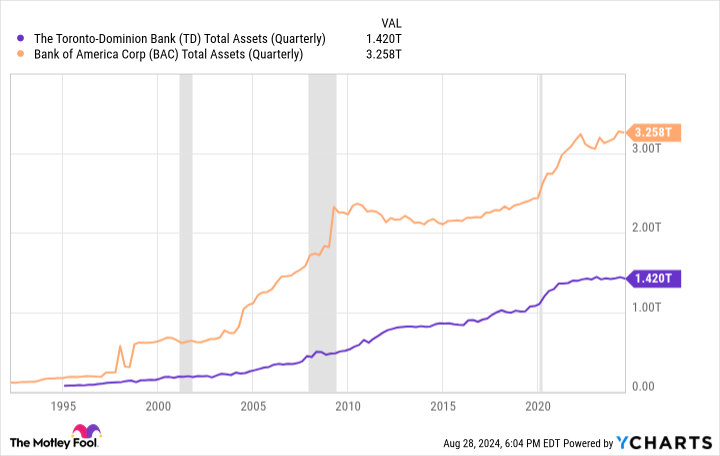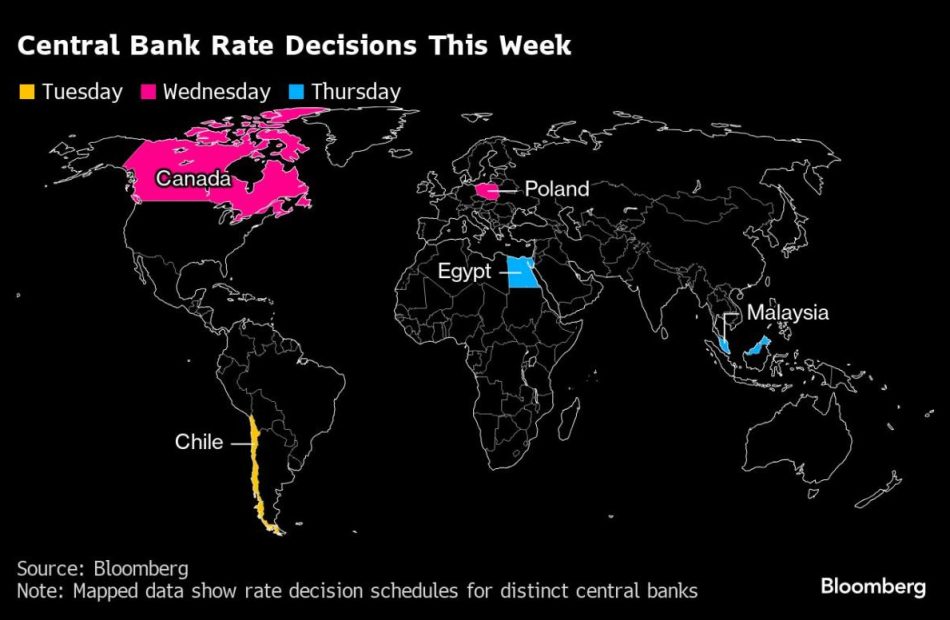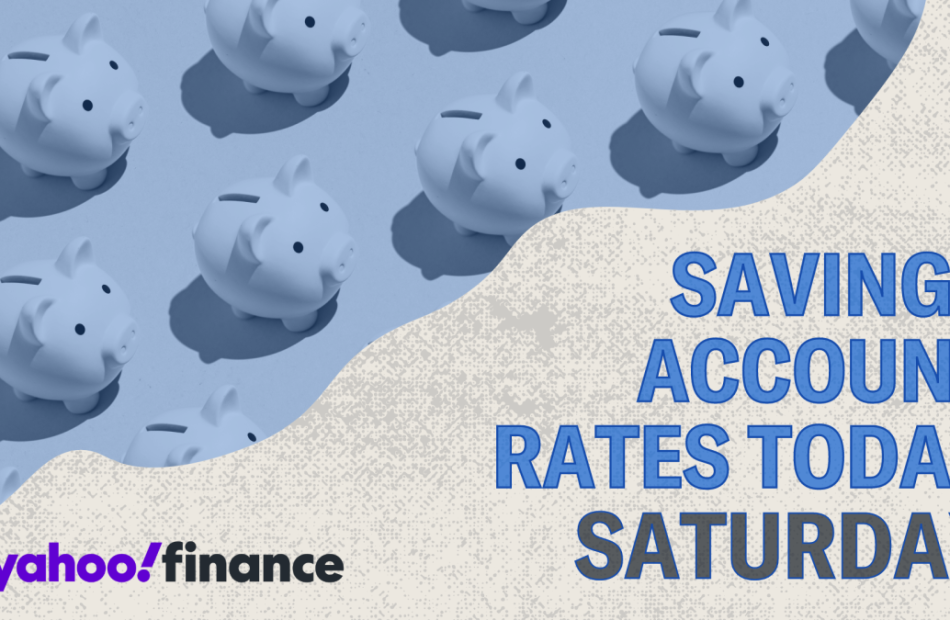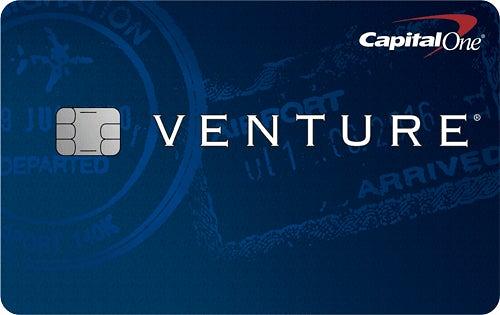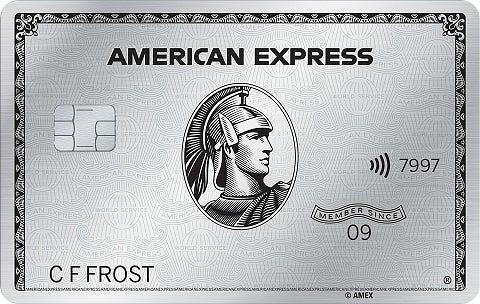GOTS combatting greenwashing with #BehindTheSeams campaign that educates consumers about sustainable textiles
Stuttgart, Germany, Sept. 02, 2024 (GLOBE NEWSWIRE) — For the second year running, Global Standard is taking consumers #BehindTheSeams this September, highlighting the sustainable and social qualities of GOTS-certified products – from runway fashion to hygiene products and so much more in between. Building on the success of last year, #BehindTheSeams 2024 has expanded to take over the entire month with more education on the people and practices making sustainable textiles, plus giveaways planned each day.
Global Organic Textile Standard (GOTS) is recognised for its comprehensive approach to sustainability. From promoting human rights along the value chain to banning harmful chemicals in certified textiles, GOTS sets a benchmark for integrity and sustainability. This campaign gives certified companies the opportunity to emphasise how they are at the forefront of changing the textile industry, and how adherence to GOTS is better for the environment more socially conscious throughout their textile production value chain.
Throughout September, Global Standard is excited to introduce daily giveaways on Instagram, featuring partnerships with leading GOTS-certified brands such as Frugi, FC St. Pauli, LangerChen, Natracare, Organic Basics, Mandala, Dedicated and more. Additionally, two major giveaways will be hosted on behindtheseams.eco, where visitors can learn about sustainability by answering daily questions and earning entries. One lucky person based in Europe and their guest will win a sustainable trip for two to Paris. This includes train travel, a two-night stay at the eco-friendly Eden Lodge Paris and a private fitting for a custom GOTS-certified jacket by John Preston. The winner will also enjoy dinner at La Table de Colette, a Michelin-starred restaurant committed to eco-responsibility, including a menu highlighting the carbon footprint of each dish. A lucky winner based in North America will win a hand-built GOTS-certified organic “Serenade” mattress sponsored by Naturepedic.
#BehindTheSeams is also spotlighting “organic in-conversion” farming and urging brands to support farmers during the critical transition period from conventional to organic. In this campaign, GOTS has partnered with the Organic Cotton Accelerator, a multi-stakeholder organisation dedicated to supporting farmers throughout the cotton supply chain as they make the shift to and sustain organic practices. Together, GOTS and OCA want to send a message that brands can bolster the organic cotton supply by investing in and buying organic in-conversion cotton.
“Global Standard and GOTS-certified companies work hard in the background to ensure a more organic, sustainable and socially conscious textile industry, but the consumer doesn’t always see or know what that actually means when they pick up a GOTS item in a store,” said Holger Stripf, head of marketing at Global Standard. “This campaign is a fun, engaging way to educate the public on living eco-consciously and why choosing organic textiles is better for the health of humans and the planet.”
Learn more at behindtheseams.eco.
日本語のプレスリリースはこちらをご覧ください。(Press release in Japanese)
请在此阅读中文新闻稿。(Press release in Chinese)
###
About Global Organic Textile Standard
GOTS (Global Organic Textile Standard), managed by non-profit Global Standard, is the world’s leading standard for organic textile certification. It sets strict environmental and social criteria for the entire textile value chain, from the harvesting of raw materials to the finished product. GOTS certification ensures the integrity of finished organic textiles and provides comprehensive solutions for the industry and assurance to consumers worldwide. For more information, visit www.global-standard.org.

Katie Lee Global Standard gGmbH lee@global-standard.org
Market News and Data brought to you by Benzinga APIs
© 2024 Benzinga.com. Benzinga does not provide investment advice. All rights reserved.
US Economy Roars In Q2, Dow Jones Smashes Records, Nvidia Fails To Amaze: This Week In The Market
August ended with a strong rebound in Wall Street’s major indices, reversing the early month market selloff as robust economic data dispelled recession fears.
The U.S. economy roared at an annualized growth rate of 3% in the second quarter, surpassing earlier estimates of 2.8% and more than doubling the pace recorded in the first quarter. This marked the eighth consecutive quarter of expansion, bolstered by a substantial upward revision in consumer spending.
A stronger-than-expected acceleration in personal spending and income in July underscored the health of household finances.
The Federal Reserve’s preferred inflation gauge plateaued after three straight months of decline, yet it fell short of the anticipated uptick, paving the way for a September interest rate cut.
The Dow Jones Industrial Average, as tracked SPDR Dow Jones Industrial Average ETF DIA, notched fresh all-time highs. The S&P 500 index, meanwhile, inched closer to its previous July peak.
The positive market momentum persisted despite Nvidia Corp‘s NVDA much-hyped quarterly earnings — the most anticipated event of the week— failing to impress investors with heightened expectations.
You might have missed…
Berkshire’s $1-Trillion Milestone
Warren Buffett celebrated his 94th birthday the same week his company Berkshire Hathaway Inc. BRK hit a $1 trillion market cap. The achievement underscores Buffett’s legendary investment acumen, solidifying his legacy as one of the most successful investors of all time.
EV Sales Slow
J.D. Power projects U.S. electric vehicle sales in 2024 to reach only 9% of the market, down from the previously estimated 12%. The firm attributes the slowdown to increased competition from gasoline-powered vehicles and delays in new EV models from major Detroit automakers like Ford Motor Co. F and General Motors GM.
Real Estate Inflows
Investors have poured $2.2 billion into five real estate ETFs, anticipating potential Federal Reserve rate cuts. This influx highlights growing investor confidence in the sector as lower rates are expected to boost housing demand and provide attractive returns in the evolving economic landscape.
Homebuyers Pressure Builders
Homebuyers are exerting pressure on builders, as mortgage rates are projected to decline. With falling rates in sight, buyers are negotiating harder. They expect better deals on new homes as the market adjusts to the anticipated shift in borrowing costs.
Now Read:
Image: Shutterstock
Market News and Data brought to you by Benzinga APIs
© 2024 Benzinga.com. Benzinga does not provide investment advice. All rights reserved.
Should You Buy Dutch Bros Stock While It's Below $40?
There are pockets of the market that can give investors growth opportunities that don’t have to be related to the tech sector or the artificial intelligence (AI) trend. Dutch Bros (NYSE: BROS) is proof of that.
But shares have been a disappointment in recent years. They have lost about 13% of their value since the initial public offering in September 2021. Some people might view this as a good opportunity to make a move.
Should you buy this mid-cap stock while it trades well below $40 per share? Here’s what investors need to know.
Dutch Bros is in growth mode
Dutch Bros is probably a top choice for investors seeking growth potential in the restaurant sector. The company reported a revenue jump of 30% in the second quarter (ended June 30). This was partly driven by same-store sales growth of 4.1%, which is healthy given the uncertainty across the economy.
Another big part of Dutch Bros’ strategy is to expand the physical footprint. After 30 new locations opened in the last three months, there are now 671 stores in the U.S. Executives have explicitly stated that the target is to get to 4,000 locations in the next 10 to 15 years.
When companies are fully focused on expansion, as is the case here, there are typically no profits being reported. Here’s where Dutch Bros bucks the trend. Net income soared roughly 130% from $9.7 million in Q2 2023 to $22.2 million in the latest quarter. Expenses are rising at a slower rate than the top line, a positive trend.
According to Wall Street consensus analyst estimates, the business is projected to increase sales and earnings per share at compound annual rates of 22.3% and 25.3%, respectively, between 2023 and 2026. This is a robust outlook.
Valuation and quality
As of this writing, shares trade 58% below their peak, which was established during the last rising market environment in late 2021. Investor sentiment has cooled down considerably since that record was reached. But the stock still looks extremely expensive at a price-to-earnings ratio of 127.
For some investors, though, this might not matter. The bulls believe that Dutch Bros can one day get to its target of 4,000 stores. To be clear, these are the only people who should buy the stock. That’s because the current valuation likely bakes in that this favorable outcome is more likely than not to occur. And if the business does hit that goal, revenue and earnings will surely be much higher than they are today.
I’m not as confident. In fact, I believe that Dutch Bros still has a lot to prove before it’s worthy of investment consideration.
One reason I feel this way is because I don’t think the business possesses an economic moat. Despite its recent struggles, Starbucks clearly dominates this industry. Over the decades, it has developed durable competitive strengths that stem from its powerful brand recognition, as well as cost advantages.
Dutch Bros doesn’t hold a candle to Starbucks’ long-running relevance. And with the latter having a store base that’s about 25 times the size of the former’s footprint just in the U.S., Dutch Bros has a lot of work to do before it can even be mentioned in the same breath as the market leader.
Investors always fall in love with a good growth story. But the reality is that strong growth doesn’t last forever. In Dutch Bros’ case, there’s downside should the gains slow down, something that wouldn’t surprise me if it happened. The retail coffee industry is one of the most competitive around, with no barriers to entry or switching costs.
Even at a price below $40 per share, investors should stay away from Dutch Bros.
Should you invest $1,000 in Dutch Bros right now?
Before you buy stock in Dutch Bros, consider this:
The Motley Fool Stock Advisor analyst team just identified what they believe are the 10 best stocks for investors to buy now… and Dutch Bros wasn’t one of them. The 10 stocks that made the cut could produce monster returns in the coming years.
Consider when Nvidia made this list on April 15, 2005… if you invested $1,000 at the time of our recommendation, you’d have $731,449!*
Stock Advisor provides investors with an easy-to-follow blueprint for success, including guidance on building a portfolio, regular updates from analysts, and two new stock picks each month. The Stock Advisor service has more than quadrupled the return of S&P 500 since 2002*.
*Stock Advisor returns as of August 26, 2024
Neil Patel and his clients have no position in any of the stocks mentioned. The Motley Fool has positions in and recommends Starbucks. The Motley Fool recommends Dutch Bros. The Motley Fool has a disclosure policy.
Should You Buy Dutch Bros Stock While It’s Below $40? was originally published by The Motley Fool
The Smartest Bank Stocks to Buy With $500 Right Now
Bank stocks are an appealing option for many investors because they tend to offer appealing dividends as well as solid long-term returns. I say “tend to offer” because not all bank stocks are created equal nor do all bank stocks perform well.
If you’re looking for the best bank stock ideas right now, the two picks featured below have real potential. And the second pick might just surprise you.
1. TD Bank: This stock has a proven history of profitability
When it comes to making money with bank stocks, Toronto-Dominion Bank (NYSE: TD) is a prime case study. Over the last 30 years, shares of TD Bank (as it is more commonly known) have posted an incredible total return (including dividends reinvested) of 3,140%. The S&P 500‘s total return was 1,340% over the same time period.
What made TD Bank’s rise so spectacular? It’s partially due to the unique operating conditions of Canada’s banking sector, where regulations encourage industry consolidation. For example, TD Bank is currently the second-largest bank in Canada, with $1.4 trillion in assets. The second-largest bank in the U.S. is Bank of America, which has assets of $3.3 billion despite the U.S. banking industry being many times larger than Canada’s. Outsized market share has allowed TD Bank to post profits and returns on equity that its U.S. counterparts can’t quite match. TD Bank’s average annual return on equity over the past five years, for instance, has been roughly 13.2%. Bank of America, for comparison, has averaged just 9.7%.
To be fair, TD Bank’s performance in more recent years hasn’t matched its historical average. Over the last three years, shares have delivered a total return of just 2% versus a total return for the S&P 500 of 30%. That underperformance is reflective of struggles in the banking sector as a whole. Bank of America shares, for instance, rose by just 0.8% over the same time period. It’s also related to some U.S. regulatory issues from 2023 involving the bank’s money-laundering controls that TD Bank is working to resolve. Until they are resolved, TD’s growth could be somewhat slowed.
Investors could use this underperformance to their advantage. TD Bank currently trades at just 1.4 times book value, a discount versus its three-year average of 1.6 times book value. The dividend yield, too, recently hit new highs and now tops 5%. If you’re looking for a bank stock with good value and a solid dividend that is well covered, TD Bank is for you.
2. Berkshire Hathaway: A secret way to bet on the best bank stocks
Berkshire Hathaway (NYSE: BRK.A)(NYSE: BRK.B) isn’t a bank stock, but it owns stakes in enough bank stocks to qualify for consideration. For decades, CEO Warren Buffett has made Berkshire a big investor in a variety of banks. Right now, Berkshire’s portfolio is betting tens of billions of dollars on well-known banks like Capital One, Citigroup, and Bank of America, as well as lesser-known banks like Ally Financial and Nu Holdings. In total, Berkshire’s portfolio has more than $40 billion invested directly in bank stocks, with another $43 billion bet on financial services companies like Mastercard, American Express, and Visa. Berkshire is more of a bank stock than many realize.
Of course, buying Berkshire shares also exposes you to a wide variety of other businesses, and your direct exposure to banks will be relatively small. But the upside is that you get to outsource your bank stock picks to one of the best investors of all time: Warren Buffett. Buffett has outlined his strategy for investing in bank stocks before.
“It’s a business that can be a very good business, when run right,” he told investors in 1996. “There’s no magic to it. You just have to stay away from doing something foolish.” With Buffett managing your bank stock portfolio, you’re much less likely to invest in a bank stock bust.
Despite the holding company recently topping $1 trillion in market cap for the first time, Berkshire Hathaway’s valuation is highly reasonable, especially considering the quality of the conglomerate. Shares trade just shy of 1.7 times book value, a figure that is likely overstated due to massive share buybacks, which grow shareholder value but tend to depress accounting book value.
It’s a strange pick as a bank stock, but Berkshire could be a great fit for those looking to add banking sector exposure while diversifying much of the risk.
Should you invest $1,000 in Berkshire Hathaway right now?
Before you buy stock in Berkshire Hathaway, consider this:
The Motley Fool Stock Advisor analyst team just identified what they believe are the 10 best stocks for investors to buy now… and Berkshire Hathaway wasn’t one of them. The 10 stocks that made the cut could produce monster returns in the coming years.
Consider when Nvidia made this list on April 15, 2005… if you invested $1,000 at the time of our recommendation, you’d have $731,449!*
Stock Advisor provides investors with an easy-to-follow blueprint for success, including guidance on building a portfolio, regular updates from analysts, and two new stock picks each month. The Stock Advisor service has more than quadrupled the return of S&P 500 since 2002*.
*Stock Advisor returns as of August 26, 2024
Ally is an advertising partner of The Ascent, a Motley Fool company. Bank of America is an advertising partner of The Ascent, a Motley Fool company. Citigroup is an advertising partner of The Ascent, a Motley Fool company. American Express is an advertising partner of The Ascent, a Motley Fool company. Ryan Vanzo has no position in any of the stocks mentioned. The Motley Fool has positions in and recommends Bank of America, Berkshire Hathaway, Mastercard, and Visa. The Motley Fool recommends Nu Holdings and recommends the following options: long January 2025 $370 calls on Mastercard and short January 2025 $380 calls on Mastercard. The Motley Fool has a disclosure policy.
The Smartest Bank Stocks to Buy With $500 Right Now was originally published by The Motley Fool
'Ethereum Killer' ADA Set To Get A Utility Boost As Cardano Upgrade 'Chang' Goes Live
Cardano’s ADA/USD ambitious “Chang hard fork” went live on Sunday, marking the Layer-1 blockchain’s shift toward decentralized governance.
What happened: Romain Pellerin, the CTO of IOG—the company behind the blockchain’s development—announced on X that the upgrade was successfully executed. He added that holders of the ADA token will have the “power to decide the fate of the protocol on-chain.”
Cardano founder Charles Hoskinson, who also co-founded Ethereum ETH/USD, called the upgrade a new chapter.
Indeed, with the hard fork, ADA holders will be able to elect representatives (known as Delegate Representatives or dReps) and vote on proposals for improvements and technical modifications to the blockchain.
The heart of this upgrade is CIP-1694, a Cardano Improvement Proposal that introduces various governance structures, including the Constitutional Committee, dReps, and Stake Pool Operators (SPOs).
For the uninitiated, a hard fork brings about a radical change in a blockchain’s programming, making it incompatible with older versions.
The Chang upgrade is part of the Voltaire Era, the final phase in Cardano’s current development roadmap to become a self-sustaining system.
Why It Matters: The upgrade added more utility for the native token ADA, which has been lackluster on price charts this year.
Currently the 11th-largest cryptocurrency, ADA has plummeted 44% year-to-date, compared to Bitcoin’s BTC/USD 30% gains and Ethereum’s ETH/USD 7.22% advances.
Price Action: The upgrade failed to rev up demand for the token, as it traded 3.57% lower than what it was 24 hours earlier, according to data from Benzinga Pro.
Image via Shutterstock
Read Next:
Market News and Data brought to you by Benzinga APIs
© 2024 Benzinga.com. Benzinga does not provide investment advice. All rights reserved.
US Jobs Data Will Help the Fed Gauge the Extent of Its Moderation
(Bloomberg) — Upcoming readouts on the US labor market, including the monthly payrolls report, will give Federal Reserve policymakers insight into the need for further interest-rate reductions after an all-but-certain cut in a little more than two weeks.
Most Read from Bloomberg
With inflation slowing — although still running faster than the Fed’s goal — Chair Jerome Powell has telegraphed a September rate cut and said that officials “do not seek or welcome” further cooling in the labor market. Weeks earlier, government figures showed lower-than-expected July job growth and the highest unemployment rate in nearly three years.
This coming Friday, the August jobs report is expected to show payrolls in the world’s largest economy increased by about 165,000, based on the median estimate in a Bloomberg survey of economists.
While above the modest 114,000 gain in July, average payrolls growth over the most recent three months would ease to a little more than 150,000 — the smallest since the start of 2021. The jobless rate probably edged down in August, to 4.2% from 4.3%.
Two days before Friday’s report, the government will issue figures on July job vacancies. The number of open positions, a measure of labor demand, is seen easing to a three-month low of 8.1 million — just above a more than three-year low.
The number of vacancies per unemployed worker, a ratio the Fed watches closely, currently stands at 1.2, similar to pre-pandemic levels and a sign labor demand is roughly in line with supply. At its peak in 2022, the ratio was 2 to 1.
Also included in the job openings report are data on lay-offs and discharges. Any large increase could add to Fed officials’ concerns about a weakening labor market.
Other labor-related reports in the upcoming holiday-shortened week include weekly jobless claims and ADP Research Institute’s August snapshot of private payrolls. In addition, the Fed will issue its Beige Book of regional economic conditions, while the Institute for Supply Management reports purchasing managers indexes for manufacturing and services.
What Bloomberg Economics Says:
“Non-farm payrolls will likely improve from July’s disappointing reading – but the 818k downward revision in the BLS’s early estimate for the March 2024 benchmark period probably leaves Fed officials less willing to take the initial prints at face value.”
— Anna Wong, Stuart Paul, Eliza Winger, Estelle Ou and Chris G. Collins, economists. For full analysis, click here
Elsewhere, the Bank of Canada is widely expected to deliver a third straight rate cut, as inflation that’s been within its target range all year allows officials to shift focus to weakness in the job market.
Purchasing manager indexes from around Asia, German industrial numbers and gross domestic product from Brazil are among other highlights.
Click here for what happened in the past week, and below is our wrap of what’s coming up in the global economy.
Asia
Asia begins the week with a wave of August manufacturing PMI data – including from Indonesia, South Korea, Malaysia, Thailand, Taiwan and the Philippines – following on from China’s official figures at the weekend.
China’s Caixin manufacturing PMI is also out on Monday, and is expected to show a return to expansion after a dip below 50 in July.
Japan on Monday gets a report on corporate performance in the second quarter. Capital investment may recover a tad after slipping in the three months through March, data that will feed into revised economic growth figures the following week.
In Australia, attention falls on current account figures that will also likely affect gross domestic product data. Those figures, due Wednesday, are expected to show that economic growth accelerated slightly from the prior quarter.
South Korea revises its second-quarter GDP the following day, and the region also gets a flurry of inflation updates. Trade data for August — published Sunday — showed that export growth returned to a double-digit clip, an outcome that bodes well for the economic outlook and reflects the resilience of global demand for technology products.
Vietnam’s consumer price gains may slow below 4% for the first time since March, while consumer-price data are also due from South Korea, Thailand, Taiwan, Indonesia and the Philippines. Trade statistics will be published in Australia, Vietnam and Pakistan.
Among central banks, Malaysia sets its overnight policy rate on Thursday and Reserve Bank of Australia Governor Michele Bullock delivers a speech the same day.
Europe, Middle East, Africa
Euro-zone policymakers have until the close of play on Wednesday to make comments before a blackout period kicks in ahead of their Sept. 12 decision.
With inflation now at a three-year low, a second rate cut for the newly-minted easing cycle looks increasingly likely. Central bank chiefs from Germany and France are among those scheduled for appearances.
The calendar for data is relatively light, with Germany likely to be a highlight. Factory orders on Wednesday and industrial production the following day will reveal the state of the country’s struggling manufacturers at the start of the third quarter.
Among regional reports on the agenda, a second reading of the euro-zone’s GDP measurement for the three months through June will be released.
The UK is likely to be similarly quiet, with final takes on August purchasing manager indexes for manufacturing and services scheduled for Monday and Wednesday respectively.
Consumer-price data in Switzerland may draw eyeballs in advance of the Swiss National Bank’s rate decision later this month. Inflation may stick at 1.3% for a third month, comfortably below the 2% ceiling for policymakers.
Turning east, in Poland — where data on Aug. 30 showed the fastest inflation so far this year — the central bank is widely expected to keep its key rate unchanged at 5.75% on Wednesday. Governor Adam Glapinski will speak at a news conference the following day.
Data from South Africa on Tuesday will likely show that the continent’s most industrialized economy skirted recession. Analysts expect the economy to have grown 0.5% in the second quarter after contracting 0.1% in the prior three months, helped by improved power supplies.
In Turkey, data is expected to show the inflation rate dropped by about 10 percentage points in August, to 52% from 62%. The central bank is hoping it declines to about 40% by year-end.
From Wednesday to Friday, African heads of and Chinese President Xi Jinping will gather in Beijing for the Forum on China–Africa Cooperation, where they’re expected to discuss new investment opportunities.
On Thursday, Egypt’s central bank is widely expected to hold its main rate at 27.5%. Some analysts, though, think it may opt to start the easing process now given the steady retreat in price pressures over the past year.
Latin America
Brazil on Tuesday will report second-quarter economic growth figures likely to reinforce that demand is shaking off the effects of tight monetary policy.
GDP is expected to have risen 0.9% quarter-on-quarter, more than during the first three months of the year, as a tight labor market and strong consumption propel activity.
The release will likely boost leftist President Luiz Inacio Lula da Silva, who’s raised public spending while pledging to improve living standards for ordinary citizens in Latin America’s largest economy. It could further pressure the central bank for interest rate increases as soon as in September.
The coming week will be crucial for economic data releases in Chile. On Tuesday, the nation’s central bank is likely to cut its key rate by a quarter-point, to 5.5%, after having paused the easing cycle at its prior meeting.
The next day, Chilean central bankers will publish their quarterly monetary policy report, with updated estimates on economic growth, inflation, and the future path for borrowing costs.
On Friday, the government will report August consumer price data, which is expected to show inflation accelerating further above the 3% target due to a series of electricity tariff hikes.
–With assistance from Matthew Malinowski, Piotr Skolimowski, Laura Dhillon Kane, Brian Fowler and Monique Vanek.
(Updates with South Korea trade in Asia section)
Most Read from Bloomberg Businessweek
©2024 Bloomberg L.P.
Hong Kong Property Pain Worsens for New World and Scion CEO
(Bloomberg) — Hong Kong’s property downturn is taking a growing toll on New World Development Co., the firm owned by the billionaire Cheng family.
Most Read from Bloomberg
The company said late on Friday it expects to post a loss of as much as HK$20 billion ($2.6 billion) for the financial year ended in June — its first annual loss in two decades. Its share price plunged 13% on Monday to the lowest level since 1986, when Bloomberg started tracking the data.
New World has been grappling with higher debt levels than its peers — adding pressure on 44-year-old Chief Executive Officer Adrian Cheng, the third generation to oversee the business, to turn things around.
The developer cited asset impairment, losses on investments and higher interest rates for the decline. A revaluation of the group’s investment and development properties including a goodwill assessment will lead to a non-cash loss of HK$8.5 billion to HK$9.5 billion, the company said. Meanwhile, core operating profit is expected to drop as much as 23%.
New World’s 5.25% perpetual dollar bond fell 3.2 cents to 83.6 cents on the dollar Monday, the largest drop in a day since September 2023, according to Bloomberg-compiled prices.
The sizable asset writedowns “could raise its leverage ratio and hurt the developer’s deleveraging plan,” said Patrick Wong, a real estate analyst at Bloomberg Intelligence. “This could also raise investors’ concerns about potential risk of further valuation decline of its investment properties particularly Hong Kong office buildings.”
The company said in an email that the writedown was a proactive move to position the company “for the upcoming interest rate cut cycle where the overall property market is expected to rebound.”
The developer has been under scrutiny in recent years over its high level of borrowings. Net debt to equity was 82.7% as of the end of last year, compared with 41.4% at rival Henderson Land Development Co. and 21.2% at Sun Hung Kai Properties Ltd., according to BI.
New World’s writedown reflects a broader problem among developers. Hong Kong’s residential prices have plummeted to an eight-year low. Office and retail sectors remain weak, reducing rental income and hence the value of developers’ investment properties.
The city’s most prestigious office towers have seen value decline significantly in the past few years. CK Asset Holdings Ltd.’s landmark Cheung Kong Center, for instance, lost one-third of its rental value over the four years ending in 2023.
The lackluster residential market also limits New World’s potential income from selling apartments. It’s putting pressure on developers to discount their projects in order to lure buyers. New World priced a new project in the middle-class neighborhood of Kai Tak In July at the cheapest level for the district since 2016.
New World’s situation is “severe” and the company needs to sell assets, according to Sam Wong, an equity analyst at Jefferies LLC. “They also have to consider whether they have to be more realistic” in terms of pricing, he added.
Despite the headwinds, Cheng has been ramping up efforts to improve the firm’s financial situation. The company recently completed more than HK$16 billion in loan arrangements and debt repayments in July and August, including early refinancing of some loans due in 2025. The company said in the email that it has completed more than HK$50 billion of debt arrangements and repayments this year.
New World is also offloading lower-tier assets to raise cash, and said in February it was planning to dispose HK$8 billion of non-core assets for the fiscal year ended in June 2024.
New World’s profit warning coincided with executive appointments on the same night at the Chengs’ private investment vehicle, putting the family’s succession plan back into the spotlight. The clan announced that one of Adrian’s brothers had been appointed as co-CEO at Chow Tai Fook Enterprises Ltd., taking charge of the North Asia region for the family’s deep-pocketed investment firm. That means four of the siblings now each effectively controls a key part of the family business.
–With assistance from Shirley Zhao, Lorretta Chen and Shikhar Balwani.
(Updates with share, bond price change and an analyst quote.)
Most Read from Bloomberg Businessweek
©2024 Bloomberg L.P.
Savings interest rates today, August 31, 2024 (best account provides 5.50% APY)
Today’s savings account interest rates are some of the highest we’ve seen in more than a decade due to several rate hikes by the Federal Reserve. Even so, savings interest rates vary widely by bank, so it’s important to be sure you’re getting the best rate possible when shopping around for a savings account. The following is a breakdown of savings interest rates today and where to find the best offers.
Overview of savings interest rates today
The national average savings account rate stands at 0.46%, according to the FDIC. This might not seem like much, but consider that just two years ago, it was just 0.07%, reflecting a sharp rise in a short period of time.
This is largely due to monetary policy decisions by the Fed, which began raising its benchmark rate in March 2022 to combat skyrocketing inflation. Since then, the Fed increased rates 11 times, though it paused further rate hikes in 2024. Experts believe the Fed will eventually begin to lower its target rate in September, which means deposit account rates, including savings interest rates, will likely begin to fall.
Although the national average savings interest rate is fairly low compared to other types of accounts (such as CDs) and investments, the best savings rates on the market today are much higher. In fact, some of the top accounts are currently offering upwards of 5% APY.
Poppy Bank, for instance, is currently offering the highest savings account rate today at 5.50% APY for its Premier Online savings account. The minimum opening deposit is $1,000 and this rate is guaranteed for three months.
Betterment also offers an account with 5.50% APY. However, this is a cash management account for brokerage customers and not a traditional savings account. There is no minimum opening deposit required.
Since these rates may not be around much longer, consider opening a high-yield savings account now to take advantage of today’s high rates.
Here is a look at some of the best savings rates available today from our verified partners:
Related: 10 best high-yield savings accounts today>>
How much interest can I earn with a savings account?
The amount of interest you can earn from a savings account depends on the annual percentage rate (APY). This is a measure of your total earnings after one year when considering the base interest rate and how often interest compounds (savings account interest typically compounds daily).
Say you put $1,000 in a savings account at the average interest rate of 0.45% with daily compounding. At the end of one year, your balance would grow to $1,004.51 — your initial $1,000 deposit, plus just $4.51 in interest.
Now let’s say you choose a high-yield savings account that offers 5% APY instead. In this case, your balance would grow to $1,051.27 over the same period, which includes $51.27 in interest.
The more you deposit in a savings account, the more you stand to earn. If we took our same example of a high-yield savings account at 5% APY, but deposit $10,000, your total balance after one year would be $10,512.67, meaning you’d earn $512.67 in interest.
Read more: What is a good savings account rate?
Asian Stocks Decline as China’s Economy Falters: Markets Wrap
(Bloomberg) — Global equities began September on the back foot as investors prepared for what’s typically considered the most challenging month for stocks.
Most Read from Bloomberg
Europe’s Stoxx 600 fell 0.2% from Friday’s record high, with the automotive and consumer goods sectors particularly affected. This downturn followed data showing a fourth consecutive month of contraction in Chinese manufacturing activity, alongside a deepening slump in the country’s residential property market.
Similarly, mining giants such as Rio Tinto Plc and BHP Group Ltd. saw declines after iron ore prices dropped. In London, Rightmove Plc surged more than 20% after Rupert Murdoch’s REA Group Ltd. said it’s exploring a possible cash and share offer.
US equity futures softened after the S&P 500 came close to an all-time high on Friday. The dollar was steady, while cash Treasuries were closed for the US Labor Day holiday.
September has been a notably poor month for stocks over the past four years, while the dollar typically outperforms, according to data compiled by Bloomberg. Wall Street’s fear gauge – the Cboe Volatility Index, or VIX – has risen each September since 2021.
The trend may continue, especially with the upcoming US jobs report on Friday, serving as a guide to how quick, or slow, the Federal Reserve will cut rates and as the US election campaign gets into full swing. Traders are pricing the US easing cycle will begin this month, with a roughly one-in-four chance of a 50 basis-point cut, according to data compiled by Bloomberg.
“I think the market is pretty well versed with what it thinks is going to happen — there will be some kind of cut,” Fiona Boal, global head of equities at S&P Dow Jones Indices, told Bloomberg Television. “As we move through autumn, we will see the VIX move more to thinking about the markets, thinking about political issues.”
Two days before Friday’s report, the government will issue figures on July job vacancies. The number of open positions, a measure of labor demand, is seen easing to a three-month low of 8.1 million — just above a more than three-year low.
The equity-market rally may stall even if the Federal Reserve starts its rate-cutting cycle, according to JPMorgan Chase & Co. strategists.
Any policy easing would be in response to slowing growth, while the seasonal trend for September would be another impediment, the team led by Mislav Matejka wrote in a note.
“We are not out of the woods yet,” Matejka said, reiterating his preference for defensive sectors against the backdrop of a pullback in bond yields. “Sentiment and positioning indicators look far from attractive, political and geopolitical uncertainty is elevated, and seasonals are more challenging.”
Elsewhere, German Chancellor Olaf Scholz’s ruling coalition was punished in two regional elections on Sunday, with the far right clinching its first triumph in a state ballot since World War II. Still, political parties moved to block the Alternative for Germany from power in the eastern states of Thuringia and Saxony.
China Woes
In Asian markets, multiple rounds of stimulus have failed to revive growth in China, where a prolonged property market slump is curbing domestic demand in the world’s second-largest economy.
“I think there’s a huge problem — by now everybody recognizes that,” Hao Ong, chief economist at Grow Investment Group, told Bloomberg’s David Ingles and Yvonne Man in an interview. “The government needs to do substantially more.”
In commodities, oil steadied as traders weigh a planned production increase from OPEC+ next month against currently lower output in Libya, while staying mindful of economic headwinds in China.
Key events this week:
-
US markets closed for Labor Day holiday, Monday
-
South Korea CPI, Tuesday
-
Switzerland GDP, CPI, Tuesday
-
South Africa GDP, Tuesday
-
US construction spending, ISM Manufacturing index, Tuesday
-
Mexico unemployment, Tuesday
-
Brazil GDP, Tuesday
-
Chile rate decision, Tuesday
-
Australia GDP, Wednesday
-
China Caixin services PMI, Wednesday
-
Bloomberg CEO Forum in Jakarta, Wednesday
-
Eurozone HCOB services PMI, PPI, Wednesday
-
Poland rate decision, Wednesday
-
Fed’s Beige Book, Wednesday
-
Canada rate decision, Wednesday
-
South Korea GDP, Thursday
-
Malaysia rate decision, Thursday
-
Philippines CPI, Thursday
-
Taiwan CPI, Thursday
-
Thailand CPI, Thursday
-
Eurozone retail sales, Thursday
-
Germany factory orders, Thursday
-
US initial jobless claims, ADP employment, ISM services index, Thursday
-
Eurozone GDP, Friday
-
US nonfarm payrolls, Friday
-
Canada unemployment, Friday
-
Chile CPI, Friday
-
Colombia CPI, Friday
Some of the main moves in markets:
Stocks
-
S&P 500 futures fell 0.1% as of 8:08 a.m. New York time
-
Nasdaq 100 futures were little changed
-
Futures on the Dow Jones Industrial Average fell 0.1%
-
The Stoxx Europe 600 fell 0.2%
-
The MSCI World Index was little changed
Currencies
-
The Bloomberg Dollar Spot Index was little changed
-
The euro rose 0.1% to $1.1063
-
The British pound was little changed at $1.3135
-
The Japanese yen fell 0.5% to 146.96 per dollar
Cryptocurrencies
-
Bitcoin rose 0.1% to $58,486.53
-
Ether rose 0.7% to $2,520.17
Bonds
-
The yield on 10-year Treasuries was little changed at 3.90%
-
Germany’s 10-year yield advanced three basis points to 2.33%
-
Britain’s 10-year yield advanced four basis points to 4.05%
Commodities
-
West Texas Intermediate crude fell 0.1% to $73.47 a barrel
-
Spot gold fell 0.1% to $2,500.86 an ounce
This story was produced with the assistance of Bloomberg Automation.
–With assistance from Catherine Bosley and Sagarika Jaisinghani.
Most Read from Bloomberg Businessweek
©2024 Bloomberg L.P.
Best credit cards for wedding expenses (September 2024)
It takes a lot of work — and money — to plan a wedding today. The average wedding today has around a $30,000 price tag, according to survey data from wedding industry sites like The Knot, The Wedding Report, and Zola. That’s why it pays to have the right credit card before deposits, bookings, and service fees roll in. With this list of best cards for weddings, you can get significant savings on your spending throughout your wedding planning process.
Best credit cards for weddings for September 2024
-
Annual fee: $95
-
Welcome offer: Enjoy a $250 credit to use on Capital One Travel in your first cardholder year, plus earn 75,000 miles after spending $4,000 within the first 3 months
-
Rewards:
-
Recommended credit score: Good to excellent
Why we like it: If you want to use your wedding expenses to help fund the honeymoon you’ll take afterward, the Capital One Venture is a great option. You’ll earn a flat 2x miles on every dollar you spend, so you don’t need to worry about the specific categories your wedding spending may fall into. If you have wedding-related travel expenses to book, you can get up to 5x miles on hotels and car rentals through the Capital One Travel portal.
For its $95 annual fee, the Capital One Venture Card also comes with up to a $100 fee credit for TSA PreCheck or Global Entry, experience credits, and other benefits when you book The Lifestyle Collection hotels, and Five Star status with Hertz.
When you’re ready to use the miles you earn, put them toward Capital One Travel bookings, redeem them for any travel purchases made with your card within 90 days, or transfer them to Capital One airline and hotel partners.
Why we like it: The Wells Fargo Reflect card’s 21-month 0% intro APR is one of the longest you’ll find from any credit card today. For wedding expenses, you’ll likely get the most use out of the intro offer for new purchases. You can charge your wedding spending over the intro period, and won’t accrue any interest until nearly two years from account opening.
Say you have $12,000 in wedding expenses you can charge to a credit card. Given the full 21 months interest-free, you can pay down that entire balance with monthly payments of just over $571. It’s essential to pay as much as possible before the intro period ends if you want to avoid your remaining balance accruing interest at the ongoing variable APR between 18.24% and 29.99%.
You may also use the Wells Fargo Reflect Card to pay down debt with a balance transfer (made within 120 days of opening). If you’ve already taken on some debt from earlier venue deposits and vendor bookings, for example, this is a good way to avoid the high interest rate on your current card.
The downside is the lack of rewards options. You won’t earn points or cash back on purchases, and there’s no cash welcome offer for new cardholders. One long-term benefit is cell phone protection which covers up to $600 (with a $25 deductible) against damage or theft.
Why we like it: Discover it Miles is another travel credit card with a flat rate on each purchase you make. By earning 1.5x miles on every purchase, you’ll maximize all your credit card wedding spending without worrying about eligible categories.
This card’s unique sign-up bonus offer makes it even more valuable for expensive wedding costs. At the end of your first year, Discover will match every mile you earn with the card, essentially doubling your first-year rewards.
Say, for example, you spend $12,000 in wedding expenses with the Discover it Miles card, and another $5,000 in regular purchases over the remainder of the year. That $17,000 could net you 25,500 miles — with the match, you’d total 51,000 miles in your first year. For a no annual fee card, more than $500 in rewards value over the first year is incredible.
You can redeem your miles toward travel purchases you make with your card from hotels, rideshares, restaurants, and more; or redeem for cash as a payment toward your balance or deposit into a bank account. Finally, the Discover it Miles also comes with an introductory 0% APR on new purchases — another valuable benefit for helping to pay down costly wedding spending over time.
-
Annual fee: $695 (see rates and fees)
-
Welcome offer: Earn 80,000 points after spending $8,000 within the first 6 months
-
Rewards:
-
5x points on flights booked directly with airlines or through Amex Travel (up to $500,000 spent per calendar year)
-
5x points on prepaid hotels booked through Amex Travel
-
1x points on all other purchases
-
-
Recommended credit score: Good to excellent
Why we like it: If you’re planning your honeymoon as a once-in-a-lifetime, bucket list vacation, the Platinum Card from American Express is a powerful tool for booking and while traveling. To start, the valuable welcome bonus can go toward up to $800 in travel expenses — and those costly wedding expenses may help you meet the minimum spending requirement. Rewards points on airfare and hotel bookings can also help to offset any travel costs required for the wedding.
Then, use the American Express Platinum Card’s many benefits to upgrade your honeymoon travel. These include up to $200 in annual statement credits for eligible prepaid hotel bookings through Amex Travel, airport lounge access across the globe, and up to $200 in annual statement credits for incidental fees with your choice airline. Plus, get up to $199 annual CLEAR Plus credit per calendar year on your membership (subject to auto-renewal), experience credits and other perks when you book The Hotel Collection or Fine Hotels + Resorts, concierge services, automatic status with Marriott Bonvoy and Hilton Honors, travel protections, and much more.
Between the rewards you’ll earn on travel and savings on travel spending, you can use this card to make your honeymoon more comfortable and efficient — while minimizing the price tag. You can redeem Membership Rewards points for travel through Amex Travel (you’ll generally get the best value on flights or select hotels) or transfer them to your preferred Amex partner airline or hotel program.
Read more: See our picks for the best American Express credit cards
-
Annual fee: $0
-
Welcome offer: Earn an extra 1.5% cash back on every purchase for the first year (up to $20,000 in eligible spending)
-
Rewards:
-
5% cash back on travel through Chase Travel℠
-
3% cash back on dining
-
3% cash back at drugstores
-
1.5% cash back on all other purchases
-
-
Recommended credit score: Good to excellent
Why we like it: Chase Freedom Unlimited offers a valuable cash-back rewards combo for taking on costly wedding expenses. Not only can you earn a flat 1.5% on every purchase (regardless of category), but you’ll also get an enhanced rate throughout the first year — up to $20,000 in spending for a maximum $300 extra back. Plus, there’s an introductory 0% APR you can use to finance your wedding purchases and pay them off over time.
Like the examples above, say you have $12,000 of wedding purchases you can put on a credit card. If you open a new Chase Freedom Unlimited with the current welcome offer, you can earn a minimum of 1.5% cash back on that spending, plus another 1.5% cash back over the first year. That’s a total of $360 back on those purchases alone. If some of your wedding purchases fall into the boosted rewards categories, or you spend more before reaching the $20,000 first-year limit, you’ll earn even more.
The rewards you earn with this card are even more lucrative if you also have a Chase Sapphire Preferred® Card or Chase Sapphire Reserve®. While you’ll earn rewards as cash back, you can also redeem them toward travel purchases through Chase Travel. If you have one of the Sapphire cards, combine your rewards under that card account and get the boosted 25% (for Chase Sapphire Preferred) or 50% (for Chase Sapphire Reserve) Chase Travel redemption rate — a great way to maximize rewards toward your honeymoon or another upcoming trip.
More options to consider: co-branded hotel credit cards
If you choose a hotel as your wedding venue, you might get the most value and savings from a co-branded hotel credit card. On top of the boosted credit card rewards, some hotel chains offer added incentives for weddings, like bonus points or discounts for your honeymoon.
These are a few current offers from popular hotel brands:
Marriott
When you book a qualifying event with Marriott Bonvoy, you can earn up to 60,000 bonus points. If you have elite status within the Bonvoy program, you’ll earn even more. You can use the program’s points calculator to estimate how many bonus points you could earn for your specific event and spending.
These are some Marriott Bonvoy credit cards available today, which you can use to maximize your spending at Marriott, get complimentary elite status, and more perks:
Hilton
You’ll earn 2x Hilton Honors points for weddings at Hilton properties. But you can also save even more with special offers from Hilton — though these offers vary depending on when you book and your wedding dates.
As an example, you can currently earn 100,000 bonus points when you book an eligible all-inclusive wedding at a participating Hilton resort. There are specific windows when you must reserve and when you’ll travel, as well as a $3,000 minimum cost and minimum of 10 rooms booked for two nights.
For more points and member perks on your wedding at a Hilton hotel, consider these cards:
Hyatt
If you choose a participating Hyatt hotel or resort for your wedding, you can earn World of Hyatt bonus points to use toward a free night on your honeymoon. The number of points you earn depends on the estimated spending amount in your contract with the hotel. Earn 30,000 points when you spend the minimum $5,000 and up to 150,000 points for a wedding totaling $40,000. You’ll also earn two tier-qualifying night credits toward elite status for every $5,000 you spend.
To qualify, request to include the offer code HMOON in your contract with the wedding vendor by Dec. 31, 2024 and pay a minimum $5,000 for your event to qualify.
To earn more bonus points with your Hyatt spending, free night awards, and more, consider this credit card from the program:
What to look for in a credit card for your wedding
Here are some card details to consider if you want to open a new credit card before taking on wedding expenses this year:
Welcome offer
A great welcome offer is always a big incentive for new cardholders. But with the added costs you’ll likely take on while wedding planning, you may be able to more easily budget for and meet the purchase minimum required to score a sign-up valuable bonus.
Just make sure you time your card application so that you do the bulk of your wedding spending (at least the spending you can charge to a credit card) during the three- to six-month period you’ll have to earn the sign-up bonus after account opening.
Rewards
In addition to the one-time welcome bonus, consider the most valuable ongoing credit card rewards for your wedding and your longer-term spending. Cards with flat rewards, like 1.5x points or 2% cash back, may be ideal for this, since you’ll earn the same amount on your purchases regardless of whether they fit into common credit card rewards categories.
But this can also vary depending on the details of your wedding and your lifestyle. If you’re planning a destination wedding, for example, you might get much more value from a travel rewards card that earns maximum points on flights and hotels. Or maybe you dine out a lot regularly and you’re holding your reception at a local restaurant — then you’ll likely get more value from a card with dining rewards.
The best rewards credit card for you offers the maximum return on your largest and most frequent purchases alike.
Intro APR
A credit card with an introductory 0% APR on new purchases can offer savings on your wedding costs if you don’t have cash already saved before planning. The right intro offer will help you avoid taking on a lasting personal loan or charging purchases you can’t pay off to a card with a regular variable APR.
Plan ahead before you choose your 0% APR card by estimating the overall cost of the wedding expenses you’ll charge to the card. You can use that number to decide what intro period length makes sense for the amount you can contribute each month to have the entire balance — or at least as much as possible — paid down before you begin accruing interest at the card’s ongoing rate.
More benefits and perks
Plenty of additional credit card perks may help you save on wedding expenses too.
Purchase protections and extended warranties offer an added sense of security for your large purchases. You can use travel protections and travel insurance benefits, as well, for getting to your venue or for the honeymoon. If you’re planning an international wedding, you can save on the purchases you make abroad with a no foreign transaction fee card.
Many credit card issuers also offer rotating discounts with specific brands or on particular purchases. You can use Amex Offers, My Wells Fargo Deals, Chase Offers, and similar programs to get targeted savings with brands you may already use. Look for your card’s specific offers within your online or mobile account.
Pros and cons of using a credit card for wedding expenses
Knowing the benefits and drawbacks of charging your wedding expenses to a credit card can help you choose the right one for your budget and avoid potential risks.
Pros
-
Cash back and points rewards: While planning a wedding, you’re likely to spend much more money than you usually would. Take advantage of the planned extra expenses by maximizing your credit card rewards — so you can use them in the future toward travel or reduce the overall cost of your big day.
-
More time to pay down expenses: Introductory 0% APR credit cards can help you avoid going into credit card debt for any wedding costs you haven’t already saved for. With zero interest periods lasting 12, 15, or even 21 months, you’ll have a long time to pay down your balance before interest does kick in. You can even find many credit cards that offer both competitive introductory periods and solid rewards on spending.
Cons
-
Risk of taking on debt: When you charge several costly purchases to a credit card, there’s always a risk of high-interest debt balances. You can avoid that debt by paying your balances in full before each monthly due date. But you will need to stay diligent in tracking your expenses and budgeting for extra costs so you don’t risk quickly-mounting debt balances or a hit to your credit score.
-
Potential added fees: Not all wedding vendors will accept credit card payments. But even if your wedding vendors do allow you to pay with a card, watch out for added fees they may charge that negate your rewards. If, for example, your caterer charges a 4% fee for paying with a card and you’ll only earn 2% back on the purchase, you might end up paying more than you get back in the long run.
Our methodology
To create our list of best credit cards for wedding expenses, we first focused on the superlatives that we believe are most useful to couples planning a wedding — generalizing for budget, location, savings. Knowing we couldn’t cover every type of wedding or expense, we focused on categories that appeal to a broad general range of wedding expenses and offer great savings no matter what your specific ceremony looks like.
Continuing that theme with our specific card picks, we looked for credit cards with features like flat rewards rates, introductory 0% APRs, no foreign transaction fees, and more — even when that benefit wasn’t necessary for the card’s specific superlative. We believe these universally useful card features can benefit a broad range of weddings. Because weddings are already expensive, we also prioritized cards with low or no annual fees (except the luxury travel category).
Our final picks include the cards we believe best fit the superlative categories and the specific details we sought. They’re also among the top-rated within their categories using our proprietary rating system. These ratings account for details like APR, annual fee, rewards, benefits, security, mobile app functionality, issuer customer service, and more.
This article was edited by Rebecca McCracken
Editorial Disclosure: The information in this article has not been reviewed or approved by any advertiser. All opinions belong solely to Yahoo Finance and are not those of any other entity. The details on financial products, including card rates and fees, are accurate as of the publish date. All products or services are presented without warranty. Check the bank’s website for the most current information. This site doesn’t include all currently available offers. Credit score alone does not guarantee or imply approval for any financial product.



